A Compilation of Movies with Blind Characters
This article delves into the captivating world of movies with blind characters. From heartfelt dramas to inspiring tales of resilience, our list showcases films that offer audiences a unique perspective on the diverse experiences of individuals with visual impairments. Join us on this cinematic journey as we discover storytelling that goes beyond the visual, shedding light on the power of narrative to transcend physical limitations.
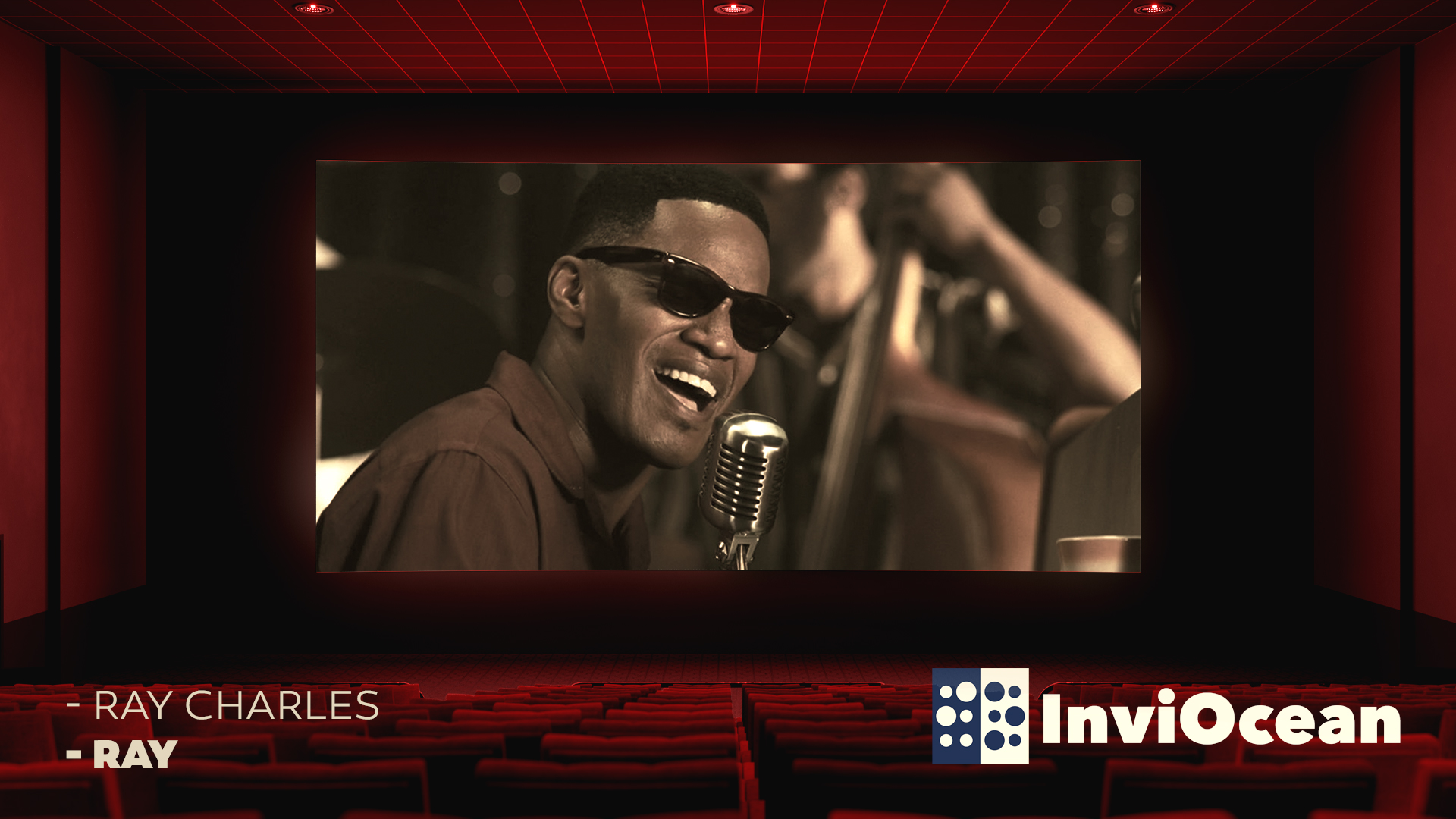
Ray Charles – Ray
“Ray,” directed by Taylor Hackford in 2004, is a biographical film that navigates the life of the legendary blind musician, Ray Charles. Starring Jamie Foxx in an Oscar-winning performance, the film takes the audience on a journey through the highs and lows of Charles’s life, revealing the man behind the timeless music.
The narrative unfolds in a non-linear fashion, skillfully intertwining pivotal moments from Ray Charles’s tumultuous life – from his challenging childhood in Florida, marked by the loss of his eyesight at a young age, to his meteoric rise in the music industry. The film adeptly explores the multifaceted nature of Charles’s character, portraying not only his musical genius but also his personal struggles, including battles with addiction and the profound impact of his turbulent relationships.
“Ray” not only pays tribute to one of the greatest musicians in history but also stands as a powerful exploration of the human experience. It skillfully navigates the triumphs and tribulations of Ray Charles’s life, celebrating his musical accomplishments while acknowledging the challenges of his blindness with empathy and authenticity. One of the best movies about famous blind people.

Mohammad – The Color of Paradise
“The Color of Paradise” (2000), directed by Majid Majidi, is a poignant exploration of perception and acceptance through the eyes of Mohammad, a blind boy portrayed by Mohsen Ramezani. Set against the lush landscapes of rural Iran, the film delves into the challenges faced by blind movie character within his family and society.
The narrative centers around Mohammad, a blind boy brilliantly portrayed by Mohsen Ramezani. Majidi crafts Mohammad’s character with sensitivity, allowing the audience to intimately experience the world through his non-visual senses. Mohammad’s blindness becomes a metaphorical lens through which the film examines the varying shades of life, challenging societal perceptions of disability and beauty.
The title, “The Color of Paradise,” encapsulates the film’s central theme—perception and acceptance. While Mohammad experiences the world without sight, he discovers the vibrant colors of life through his unique lens. The film challenges viewers to question their own definitions of beauty.
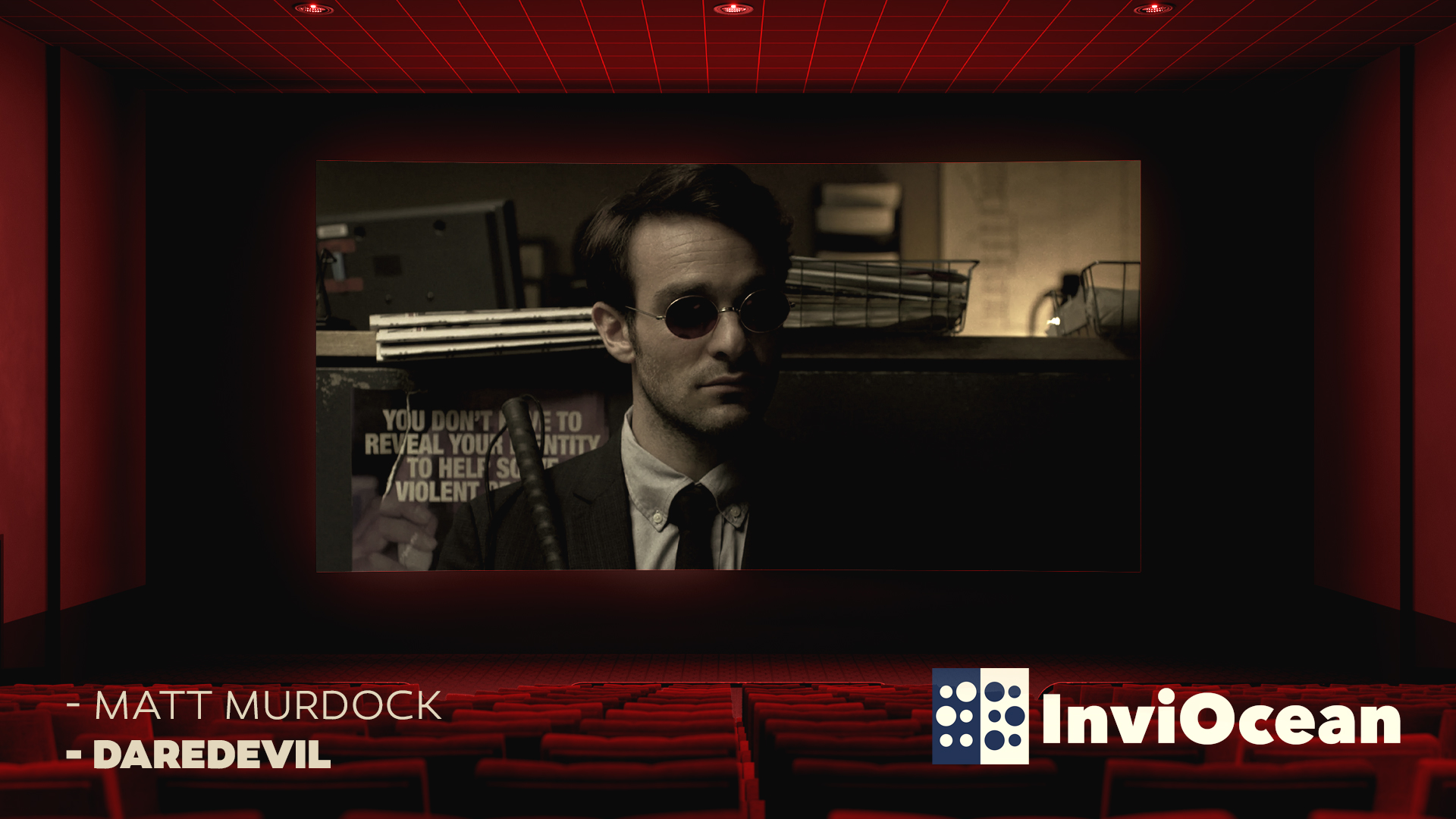
Matt Murdock – Daredevil
Matt Murdock, also known as Daredevil, is a complex and compelling character at the heart of the film “Daredevil” (2003). Portrayed by Ben Affleck, Murdock is a blind lawyer who, after a tragic accident involving chemical waste, gains heightened senses that compensate for his loss of sight. This transformation not only enhances his physical abilities but also introduces a moral and psychological depth to his character.
Affleck’s portrayal of Matt Murdock goes beyond the typical superhero archetype. Murdock grapples with the challenges of living with blindness while navigating the complexities of his dual life as a lawyer and a vigilante. The film delves into Murdock’s internal struggles, exploring themes of justice, morality, and the consequences of his actions.
One of the film’s strengths lies in its sincere depiction of Murdock’s blindness. Rather than portraying it as a mere obstacle, the narrative showcases how Murdock’s heightened senses become his greatest assets. His ability to “see” the world in a unique way, through sound, touch, and smell, sets him apart from other superheroes.
Overall, Matt Murdock stands out as a multidimensional and relatable superhero. His struggles with disability, coupled with his unwavering commitment to justice, make him a character audiences can empathize with. “Daredevil” successfully humanizes the superhero genre, offering a portrayal of blindness that goes beyond mere representation, turning it into a strength that defines the character’s identity and contributes to the film’s unique narrative appeal.
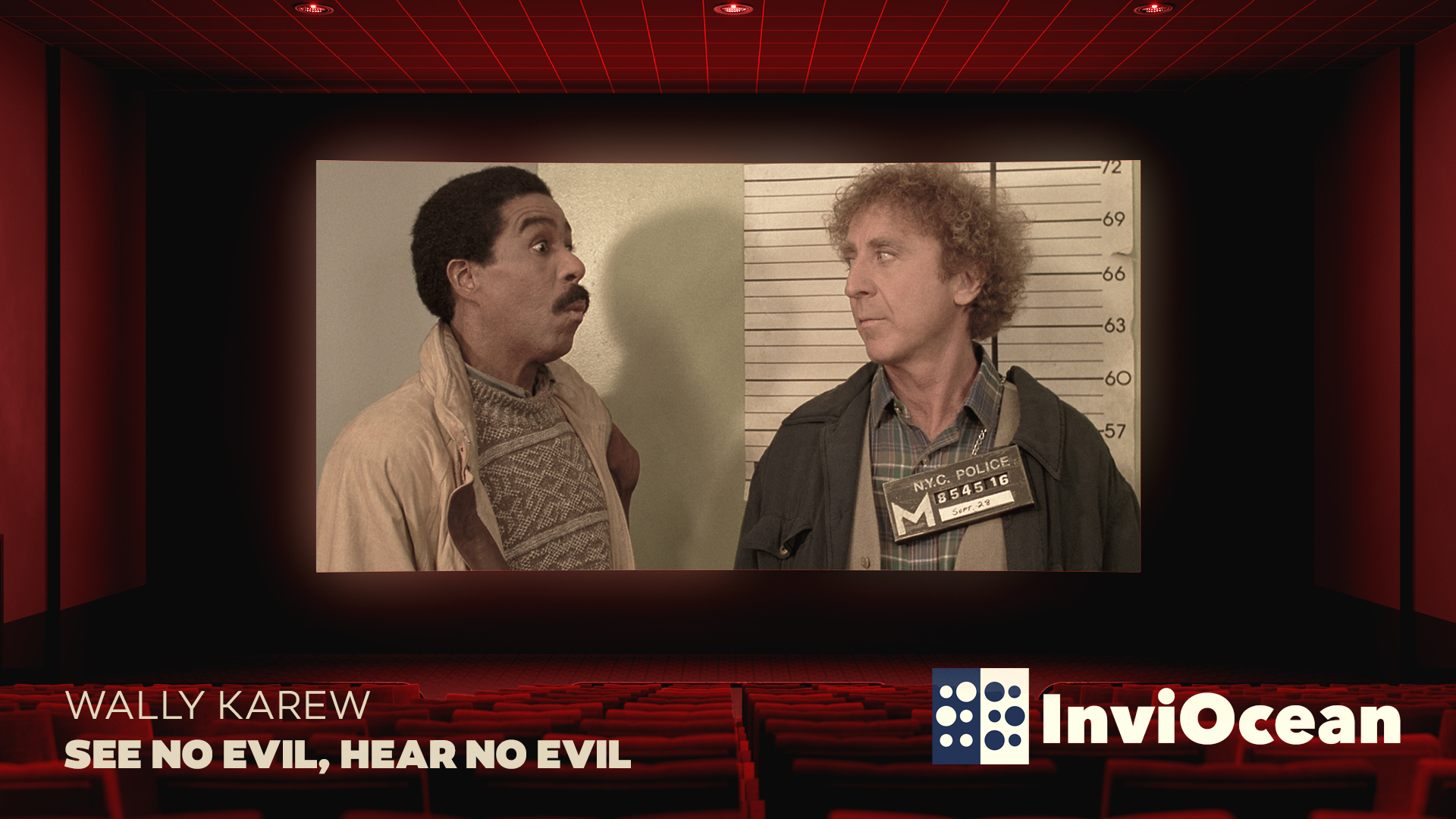
Wally Karew – See No Evil, Hear No Evil
“See No Evil, Hear No Evil,” directed by Arthur Hiller in 1989, brings together the comedic genius of Richard Pryor and Gene Wilder in a riotous tale of mistaken identities, crime, and the chaotic collision of two unlikely friends.
The film centers on Wally Karew (Richard Pryor), who is visually impaired, and Dave Lyons (Gene Wilder), who is hearing impaired. The duo unwittingly becomes embroiled in a murder conspiracy when Wally stumbles upon a dead body and Dave witnesses the actual crime. Together, they must navigate a world of confusion, criminals, and constant miscommunication to clear their names.
Pryor and Wilder’s chemistry is the beating heart of the film. Their comedic timing and ability to play off each other’s strengths create a dynamic and hysterical partnership. Pryor’s expressive physical comedy and Wilder’s deadpan delivery blend seamlessly, eliciting genuine laughter throughout the film.
The plot unfolds with a series of absurd and laugh-out-loud situations, often driven by the characters’ sensory impairments. The film cleverly uses the challenges presented by Wally’s blindness and Dave’s deafness to set up hilarious misunderstandings, creating a unique and memorable comedic experience.
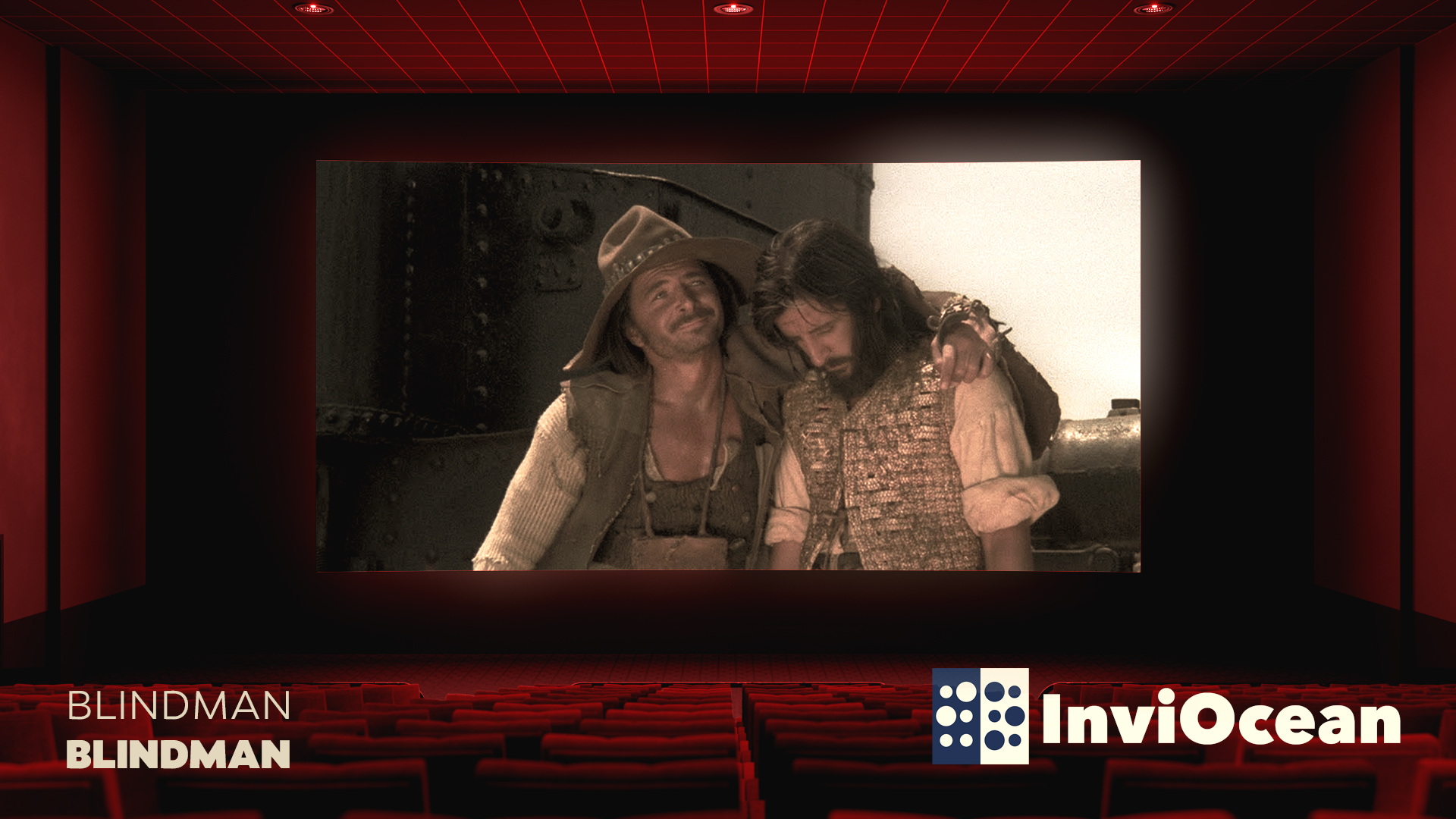
Blindman – Blindman
“Blindman” movie, directed by Ferdinando Baldi in 1971, adds a distinctive twist by featuring a blind protagonist in the lead role. Starring Tony Anthony as the titular Blindman, the film offers a mix of action, humor, and a touch of eccentricity.
The narrative follows Blindman, a sightless gunslinger with heightened senses, who is hired to escort fifty mail-order brides to their intended husbands. However, the journey takes an unexpected turn when a gang of outlaws, led by the unscrupulous Domingo (Lloyd Battista), kidnaps the women, setting the stage for a revenge-fueled showdown.
Tony Anthony’s portrayal of Blindman is a testament to the actor’s ability to inject charisma and rugged charm into an unconventional character. Blindman’s reliance on his remaining senses and the tactile interactions with his surroundings create a unique dynamic within the western genre.
“Blindman” skillfully balances drama and humor, exploiting its unconventional premise for both suspenseful and amusing moments. The supporting cast, including Ringo Starr, contributes to the film’s eclectic charm, and the soundtrack by Stelvio Cipriani complements the action.
Deviating from traditional western norms, “Blindman” delivers an unpredictable and entertaining cinematic experience. With its quirky protagonist and a blend of humor and action, the film stands out as a distinctive entry in the spaghetti western genre.
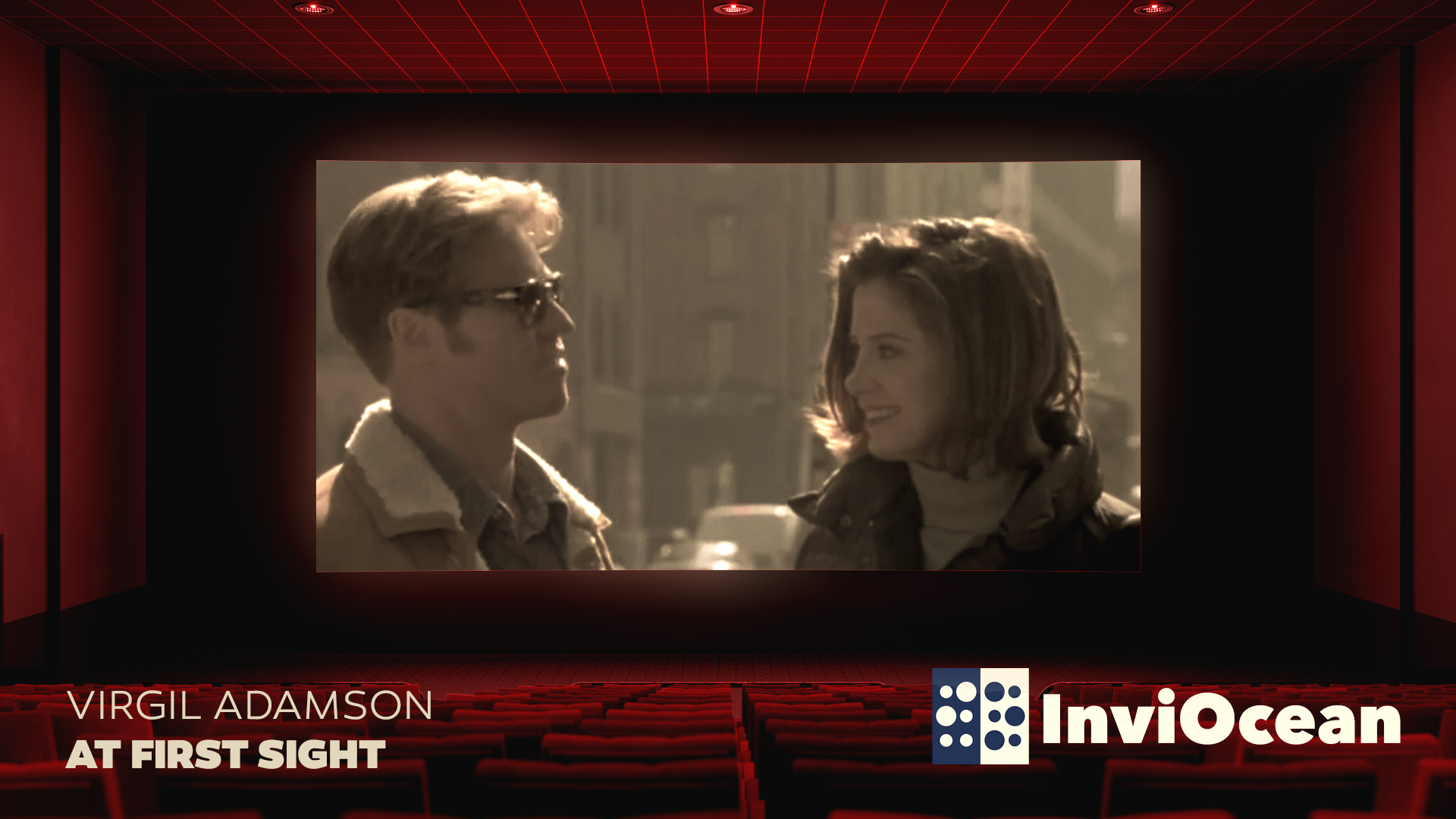
Virgil Adamson – At First Sight
Directed by Irwin Winkler, “At First Sight” is a heartfelt romantic drama that explores the complexities of love and the challenges faced by individuals with visual impairment. Starring Val Kilmer and Mira Sorvino, the film is inspired by the true story of a blind man who undergoes a groundbreaking surgical procedure to regain his sight.
The narrative revolves around Virgil Adamson (Val Kilmer), a blind massage therapist, and Amy Benic (Mira Sorvino), an architect. Their lives intertwine when Amy convinces Virgil to undergo an experimental surgery that could restore his vision. As Virgil grapples with the overwhelming sensory input of the visual world, their relationship undergoes profound changes.
The film delicately navigates the challenges faced by Virgil as he learns to interpret the visual information around him. It raises thought-provoking questions about the nature of perception, the impact of regained sight on one’s identity, and the sacrifices made in the pursuit of a “normal” life.
“At First Sight” benefits from its poignant storytelling and moments of introspection, inviting viewers to reflect on the profound connection between love and perception. The film’s cinematography captures the beauty of both Virgil’s tactile world and the visual landscape, enhancing the narrative’s emotional impact.
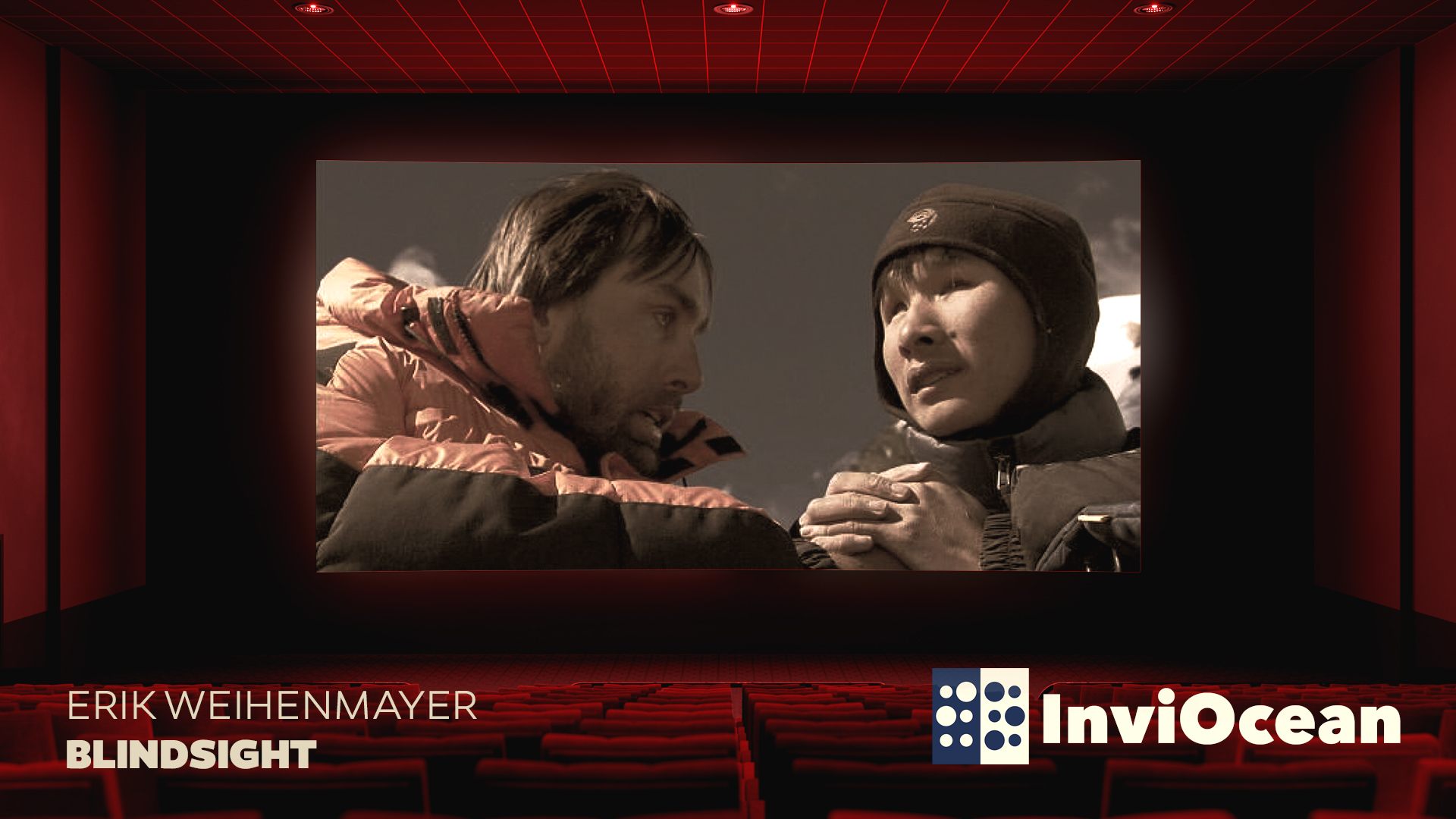
Erik Weihenmayer – Blindsight
Directed by Lucy Walker, “Blindsight” is a poignant documentary that follows a group of visually impaired Tibetan teenagers as they embark on an extraordinary journey to climb Mount Everest. The film beautifully captures their physical and emotional triumphs against the breathtaking backdrop of the Himalayas.
The narrative centers around Erik Weihenmayer, the first blind person to reach the summit of Everest, and Sabriye Tenberken, a German educator who founded a school for blind children in Tibet. Together, they lead a group of teenagers, each facing their own personal challenges, on a daring expedition to base camp.
“Blindsight” skillfully blends the physical feat of mountain climbing with the inner struggles of the visually impaired teens. The film provides a deeply human perspective, emphasizing the universal themes of resilience, determination, and the pursuit of dreams.
The documentary introduces us to each teenager, offering glimpses into their lives, aspirations, and the societal challenges they face as visually impaired individuals in a remote Tibetan village. The characters’ authenticity and courage form the emotional core of the film.
“Blindsight” is a moving and inspirational documentary that transcends the limitations of physical disability. By capturing the indomitable spirit of its subjects against the backdrop of one of the world’s most challenging landscapes, the film leaves a lasting impression on audiences, celebrating the triumph of the human spirit in the face of adversity.
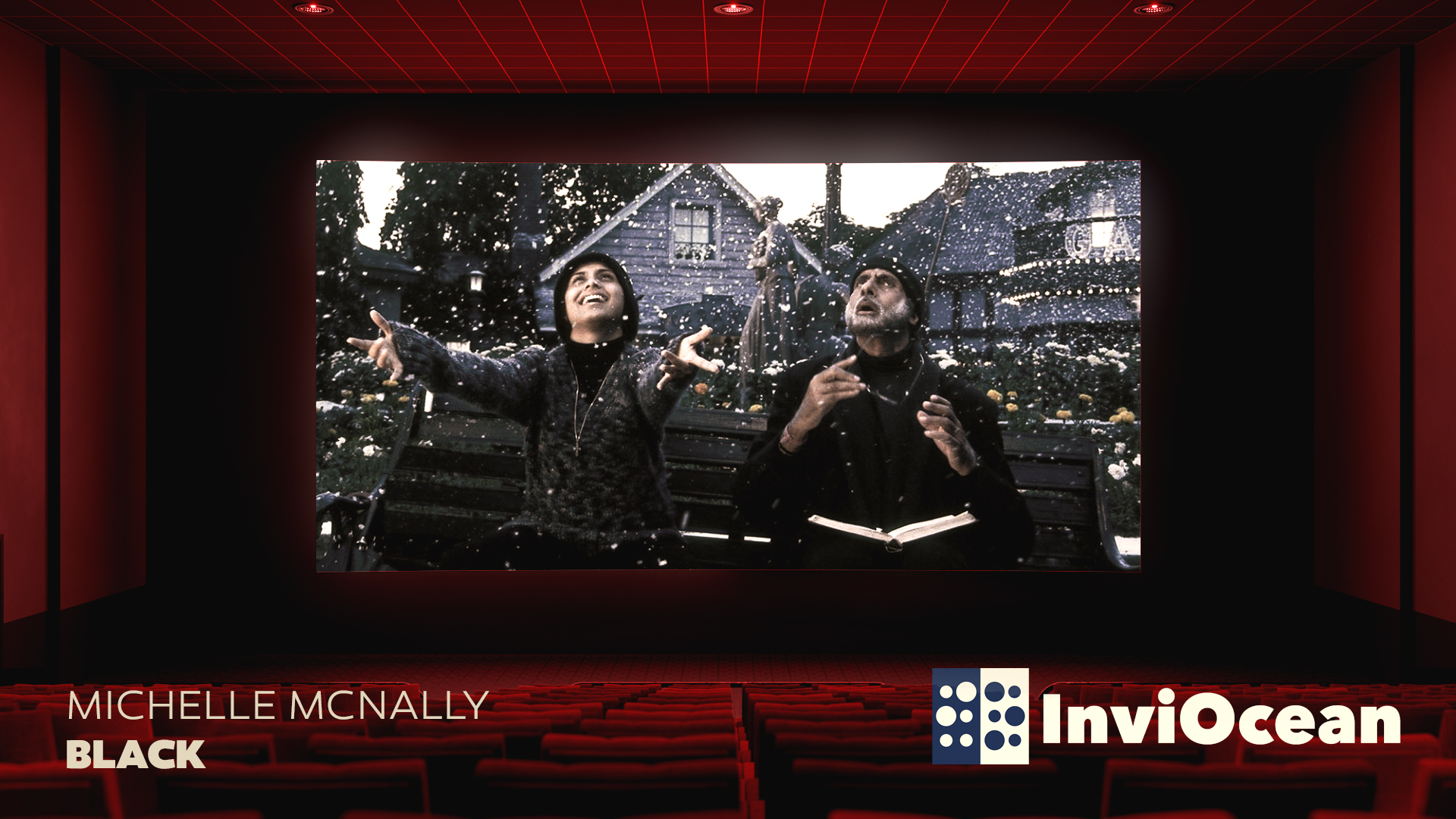
Michelle McNally – Blind
Directed by Sanjay Leela Bhansali, “Black” is a poignant Indian drama that explores the complexities of communication, resilience, and the transformative power of a teacher-student relationship. Starring Amitabh Bachchan and Rani Mukerji in stellar performances, the film unfolds against the backdrop of a world where the protagonist battles both blindness and deafness.
The narrative revolves around Michelle McNally (Rani Mukerji), a young girl born deaf and blind, and her relationship with her teacher, Debraj Sahai (Amitabh Bachchan). Debraj, an unorthodox and eccentric teacher, takes on the formidable task of breaking through Michelle’s barriers and helping her navigate a world devoid of sensory experiences.
The film skillfully captures the challenges faced by Michelle and her teacher as they communicate through touch, signs, and a unique language they develop. The cinematography by Ravi K. Chandran creates a visually evocative experience, enhancing the emotional impact of the narrative.
“Black” is not merely a story of physical disabilities but a celebration of the indomitable human spirit. It explores themes of love, sacrifice, and the pursuit of knowledge, leaving a lasting impact on the audience. The film’s narrative, inspired by Helen Keller’s life, is a testament to the potential within every individual to overcome seemingly insurmountable challenges.
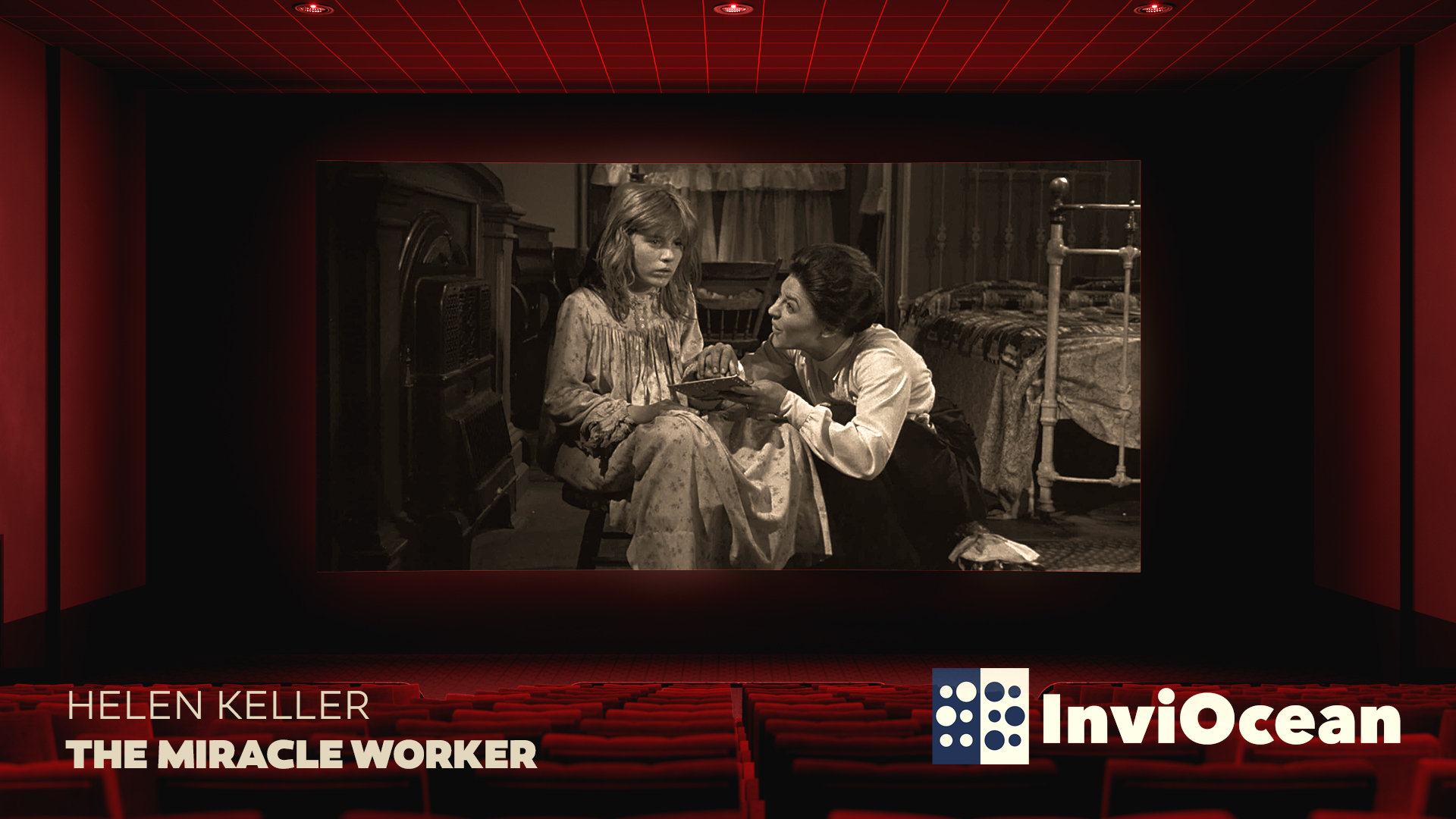
Helen Keller – The Miracle Worker
The cinematic landscape has witnessed a rise in compelling narratives, highlighting the strength and complexity of blind female characters. Directed by Arthur Penn, “The Miracle Worker” is a poignant and inspiring film that brings to life the remarkable true story of Helen Keller, a blind and deaf young girl, and her dedicated teacher, Anne Sullivan. Released in 1962, the film stands as a testament to the indomitable human spirit and the transformative power of education.
“The Miracle Worker” explores the challenges faced by both teacher and student as they navigate the darkness and silence that surround Helen’s world. The intense and often physical interactions between Anne and Helen provide some of the film’s most memorable and emotionally charged moments.
The film’s black-and-white cinematography, by Ernesto Caparros, effectively conveys the starkness of Helen’s world and the emotional intensity of the characters’ struggles. In addition to its powerful performances, “The Miracle Worker” is notable for its ability to communicate a universal message about the resilience of the human spirit and the importance of perseverance in the face of adversity. The film remains a classic portrayal of the triumph of education and understanding.
The stirring score by Laurence Rosenthal complements the emotional depth of the narrative, enhancing key moments without overpowering the film’s intimate focus on the central relationship.
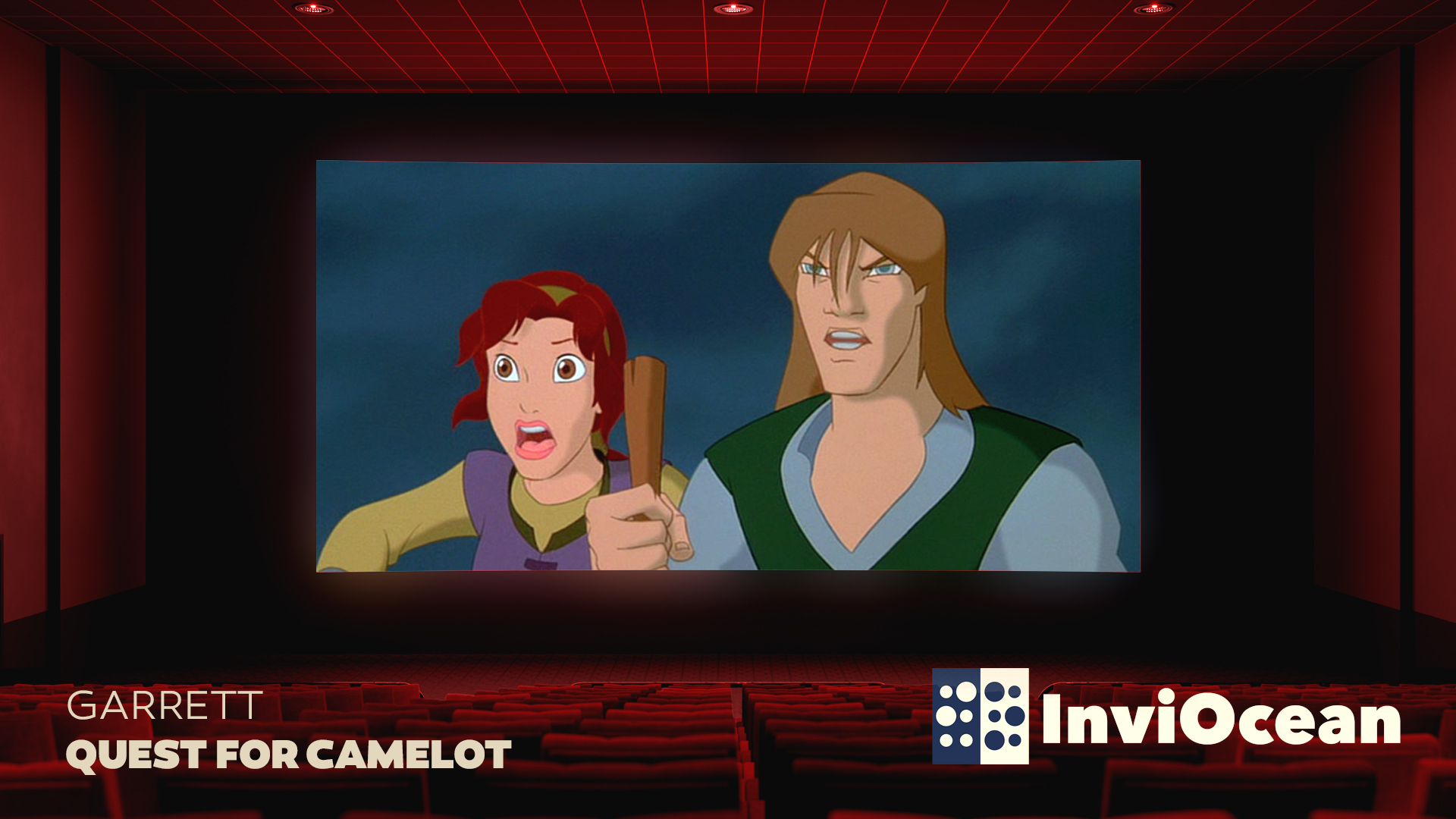
Garrett – Quest for Camelot
Wrapping up our compilation, we present a masterpiece with blind cartoon characters. “Quest for Camelot,” Warner Bros.’ animated musical fantasy film, takes audiences on a magical journey filled with bravery, friendship, and the timeless quest for true heroism. Released in 1998, the film weaves a captivating tale inspired by the classic Arthurian legend.
The story follows the courageous and determined Kayley, voiced by Jessalyn Gilsig, as she embarks on a quest to recover Excalibur, King Arthur’s legendary sword, after it is stolen by the villainous Ruber, voiced by Gary Oldman. Along the way, Kayley forms an unlikely alliance with a blind hermit named Garrett, voiced by Cary Elwes, and a two-headed dragon duo, voiced by Eric Idle and Don Rickles.
The standout blind cartoon character, Garrett, a hermit voiced by Cary Elwes, challenges traditional notions of heroism. Garrett’s blindness becomes a distinctive strength rather than a hindrance, showcasing the power of resilience and adaptability. The film portrays his heightened senses and exceptional combat skills, emphasizing that heroism comes in various forms.
Garrett’s inclusion as a central character adds depth to the narrative, and his interactions with Kayley contribute to the film’s overarching themes of unity and acceptance. The portrayal of a blind character in a positive and empowering light was a notable step toward inclusivity in animated storytelling.
While “Quest for Camelot” may not have achieved the same level of acclaim as some of its animated counterparts, it remains a charming and heartwarming adventure that resonates with audiences who appreciate tales of bravery and the triumph of the human spirit.
In conclusion, this curated compilation of movies with blind characters offers a poignant journey through the diverse landscapes of storytelling. From heartwarming dramas to animated adventures, these films not only entertain but also illuminate the resilience, strength, and unique perspectives of individuals with visual impairments. The power of cinema lies in its ability to transcend physical limitations, fostering empathy and understanding. Let us continue to appreciate and advocate for narratives that amplify the voices of those often underrepresented, reminding us that every story, regardless of the visual spectrum, has the potential to inspire, educate, and profoundly touch our hearts.
Mama Odie takes on the role of a supporting character in Disney’s 2009 animated movie, “The Princess and the Frog.” This 197-year-old voodoo priestess is blind and resides in the deep swamps of Louisiana.
Mythological characters blinded by the gods include Lycurgus, Thamyris, Aepytus II, Phineus, Ilus, and Anchises. On the other hand, those blinded by humans encompass Polyphemus, Phoenix, Plexippus and Pandion, Polymestor, and Metope.
Among the visually impaired actors are Jack Birkett, a blind actor and dancer, Belo Cipriani, a blind media personality and author, and Dana Elcar, a blind actor known for portraying famous blind characters on shows like “The Magic School Bus,” “MacGyver,” and “ER.”
